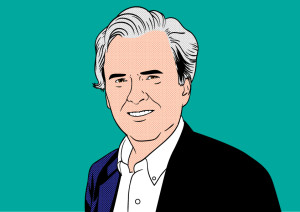Apple Pay Status Update: Three Years On Do You Still Need It?
By Robert McGarvey
For Credit Union 2.0
It’s been over three years since Apple Pay rolled out the nation’s first beefy mobile payments system and today’s blunt question has to be: does anyone still care?
Into that fray has stepped Pymnts which recently offered up a detailed look at mobile wallet usage, along with trends.
Be ready to question your own institution’s wallet strategy.
Be ready to ask if it’s in fact time for an institution that offers Apple Pay, et. al. to dump them.
The data just may surprise you.
For good reason. Apple Pay was birthed amid loud and wide clamoring for it. I remember the panic that beset many credit unions three years ago when Navy Federal was the first – and only – credit union invited to the launch party by Apple. I had many talks with credit union CEOs and even more CIOs who wanted Apply Pay, like right now. And Apple put all of them in a deliberate queue where it took many weeks, sometimes months, before more credit unions joined the Apple Pay legions.
Every credit union wanted Apple Pay – even though they had spurned a very similar Google Wallet a few years earlier. I had first used Google Wallet to pay at a Whole Foods in Scottsdale AZ in, I believe, 2013 which had Mastercard touch and pay installed on its registers and sometimes it worked with Google Wallet, sometimes it didn’t.
But few credit union execs paid much mind to Google Wallet. It was Apple’s marketing genius that spawned a feeding frenzy where every institution craved a contactless payment solution.
Apple nowadays regularly updates its list of institutions that offer Apple Pay but I don’t think anybody much cares anymore. More credit unions don’t offer Apple Pay than do – should they care?
That’s where the Pymnts data come in.
The article reminds readers of the famous S Curve, via Harvard Business prof Theodore Levitt, which posited that three years in, a new consumer product’s adoption should be at the top of the S curve. Where does Apple Pay stand? Here’s what Pymnts says: “Apple Pay’s adoption since its launch in Oct. 2014 looks more like a flat line than an S-curve. In fact, the overall growth in Apple Pay transactions is almost certainly the result of more merchants installing near-field communication (NFC) terminals than iPhone users getting more interested in Apple Pay itself.”
Read that again – and remember that, per Apple CEO Tim Cook, Apple Pay is now accepted at more than half of all US retail locations. And yet even Cook said that mobile payments have “taken off slower than I personally would have thought if you asked me sitting here a few years ago.”
How bad is it? According to Pymnts, under 30% of Apple iPhone owners have activated and tried Apple Pay. That’s terrible but just 17% of Samsung owners have activated and tried Samsung Pay. And only 13% of all Android users have activated and tried Android Pay (nee Google Pay, nee Google Wallet).
Remember Levitt’s curve. These are awful adoption rates.
Pymnts tossed out more gloomy data. Just 23% of Apple Pay users used it for their last transaction at store where they could use it.
And a dismal 17% of Android Pay users did likewise.
(Pyments, by the way, is reasonably bullish on WalMart Pay and its adoption. I don’t shop at WalMart so I defer to other opinions.)
Bottomline: Apple Pay has its fan base but it definitely isn’t huge. Data is no more compelling for Android Pay and Samsung Pay. There is a user cohort – but, really, mobile wallets are still not wowing that many consumers with their alleged advantages over plastic cards.
The big question: if you don’t presently offer Apple Pay and Android Pay should you? That depends upon your demographic, now and also the one you want five or ten years from now. If your members want mobile payments, give them what they want.
Which bring us to the should you dump the mobile wallets? Absolutely not, multiple credit union senior execs told me. They in fact expressed delight that the mobile wallets are not much used – Apple Pay for instance charges a significant premium over a credit card as such and no credit union is thrilled about paying the difference. And yet credit unions that offer Apple Pay, etc. nonetheless get to proclaim themselves on the tech cutting edge and that’s a potent marketing platform, especially with Millennials.
For some credit unions, the present situation is win – win. They brag about their techie cred and yet they aren’t stuck with paying the premiums involved in mobile wallet usage.
So don’t dis non use of the mobile wallets. It just may be exactly what most credit unions honestly prefer.
